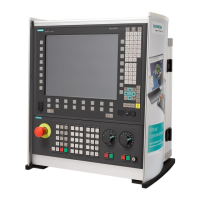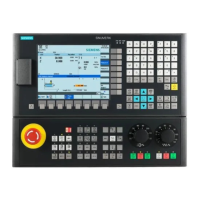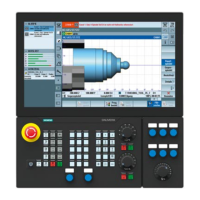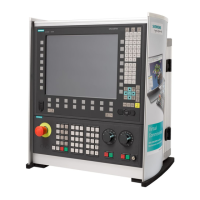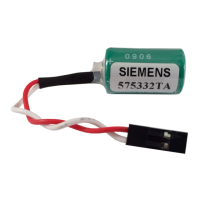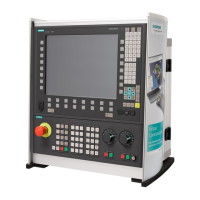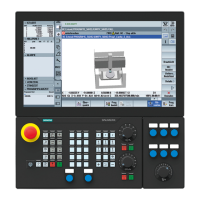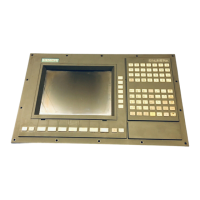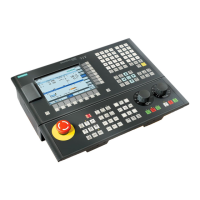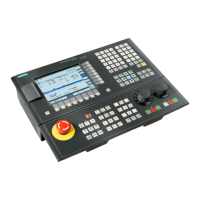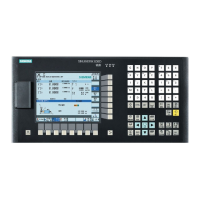Tool offsets
8.11 Smooth approach and retraction
Fundamentals
8-50 Programming Manual, 10.2004 Edition, 6FC5 298-7AB00-0BP1
;
<
',65
3
=
=
0DFKLQLQJXSWRWKLV
SRLQWZLWK*R
FRQWLQXLQJZLWK*
)
&RQWRXU
]
• Programming during retraction
– For an SAR block without programmed geometry axis,
the contour ends in P
2
. The position in the axes that form the machining plane are
obtained from the retraction contour. The axis component perpendicular to this is
defined by DISCL. If DISCL=0, movement runs fully in the plane.
– If only the axis is programmed perpendicular to the machining plane in the SAR block,
the contour ends in P
1
. The position of the other axes is obtained as described
previously. If the SAR block is also the deactivation block of the TRC, an additional
path is inserted from P
1
to P
0
, so that there is no movement at the end of the contour
when the TRC is deactivated.
– If only one axis on the machining plane is programmed, the missing 2nd axis is
modally added from its last position in the previous block.
– For an SAR block without programmed geometry axis, the contour ends in P
2
. The
position in the axes that form the machining plane are obtained from the retraction
contour. The axis component perpendicular to this is defined by DISCL. If DISCL=0,
movement runs fully in the plane.
– If only the axis is programmed perpendicular to the machining plane in the SAR block,
the contour ends in P
1
. The position of the other axes is obtained as described
previously. If the SAR block is also the deactivation block of the TRC, an additional
path is inserted from P
1
to P
0
, so that there is no movement at the end of the contour
when the TRC is deactivated.
– If only one axis on the machining plane is programmed, the missing 2nd axis is
modally added from its last position in the previous block.

